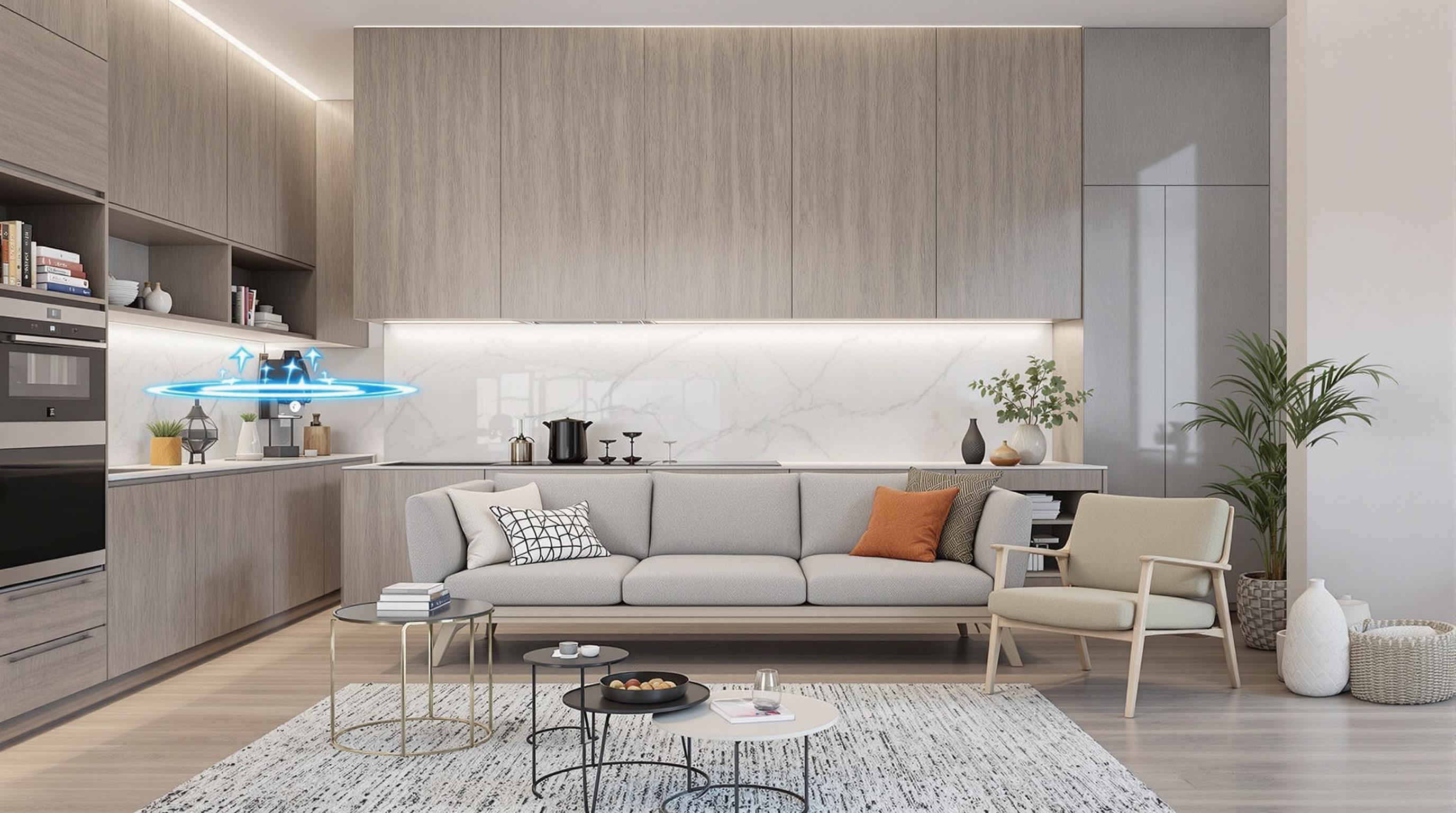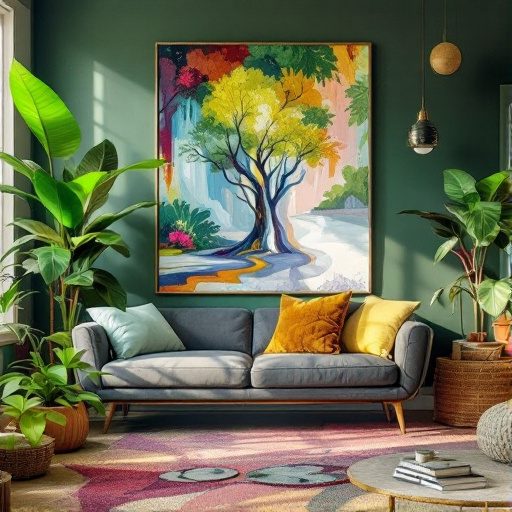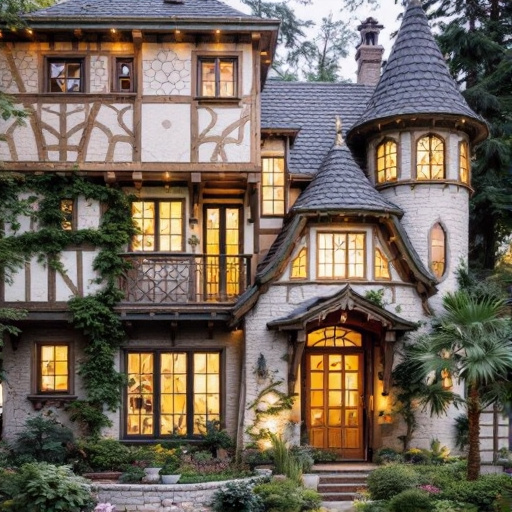Featured Articles
- "Decoding the Mystery: How Folklore Influences Modern Home Designs in Unexpected Ways"
- Reimagining Ruins: How Abandoned Spaces Are Inspiring Modern Home Designs and Eco-Conscious Living
- Reimagining Spaces: How Biophilic Design Can Transform Mental Health in Your Home
- Reviving the Past: How Retro Futurism is Reshaping Modern Home Design with a Twist of Nostalgia
- Revolutionizing Spaces: How Biophilic Design is Transforming Urban Home Environments into Nature-Infused Sanctuaries
Whimsical Homes: The Rise of Playful Design Elements for Serious Living
Whimsical Homes: The Rise of Playful Design Elements for Serious Living
In a world increasingly dominated by minimalism and stark functionality, whimsical homes are emerging as a vibrant antidote, infusing playful design elements into everyday living. From color-splashed interiors to surreal furniture choices, this movement emphasizes that homes can be both beautiful and joyful spaces.
The Birth of Whimsy: A Historical Perspective
To understand the rise of whimsical design, we must take a journey through time. Post-World War II, homes often mirrored the austerity of the era, with functional simplicity reigning supreme. However, as the world entered the late 20th century, the shift towards individuality and self-expression began to take root. Design movements like Pop Art, which celebrated bright colors and playful imagery, laid the groundwork for today's whimsical homes. A rich tapestry of styles has become available as people seek to define their living spaces uniquely.
Escaping the Mundane
As an 18-year-old content writer, I often hear people say, "Home should be a reflection of your personality." But when did we decide that our homes should resemble stark warehouses instead of vibrant, personal sanctuaries? According to a survey by the American Institute of Architects (AIA), 79% of homeowners expressed a desire for their decor to reflect their values and interests, showcasing the need for more personal, whimsical touches in design.
Statistics Highlighting the Trend
Interestingly, a report from the National Association of Home Builders (NAHB) shows that homes featuring bold accent walls and eclectic decor have increased by 25% over the past decade. This numeric growth is more than just about aesthetics; it reflects a growing desire for spaces that evoke happiness and creativity. For instance, think of the rise of multi-colored kitchens or quirky wallpaper featuring animals — these aren’t just trends; they are modern-day expressions of individuality. In today’s world, people are less interested in trends defined by others and more enthusiastic about creating their unique blend of aesthetics.
The Power of Color
Color plays a significant role in whimsical design. A splash of yellow can inject warmth and cheer, while playful shades of teal and coral can evoke a sense of playfulness. According to a survey from the Pantone Color Institute, 41% of participants admitted that color significantly influences their mood and feelings. This phenomenon has inspired homeowners to embrace vibrant colors, breaking free from neutral palettes that used to dominate design trends.
Case Study: The Curious House of Color
One notable example of whimsical home design is the Curious House of Color in Portland, Oregon. The homeowners, an artistic couple in their 30s, took brashness to the next level by painting their exterior in a kaleidoscope of colors, complete with whimsical murals. Inside, every room tells a story, with themes changing from vibrant jungle motifs in one to a tranquil under-the-sea atmosphere in another. This delightful abode has become a local attraction featured in several home design magazines, inspiring others to embrace the idea of homes that are unabashedly unique.
The Role of Nature in Design
Humans have an instinctual connection with nature, a fact that whimsical designs cleverly tap into. Incorporating organic shapes and natural textures can enhance the playful vibe of a home. Think of furniture in the shape of mushrooms or lamps that resemble tree branches—these pieces not only serve a purpose but also create an inviting atmosphere that sparks conversation and creativity. A study by the University of Exeter found that incorporating elements of nature into living spaces can reduce stress levels by up to 60%, making whimsical designs even more enticing.
Functional Yet Fantastic: The Furniture Revolution
Whimsical furniture doesn't necessarily eschew functionality; rather, it merges the two seamlessly. Brands like Swedese and Hay produce pieces that attract attention yet retain usability. From chairs that seem to dance across the room to tables boasting playful designs, these items are conversation starters that add a sense of joy to any space. This blend of joy with practicality has turned whimsical furniture into sought-after treasures for homes, reinforced by the 35% increase in sales of eclectic furniture styles in the past year alone, according to industry reports.
Personalizing Your Home: Tips and Tricks
If you’re inspired to incorporate whimsical elements into your home, here are a few tips:
- Embrace Eclecticism: Mix and match different design styles. Don’t shy away from combining vintage finds with contemporary pieces.
- Color Is Key: Use bold color schemes that reflect your personality. If you have a favorite shade, find ways to incorporate it throughout your home.
- Artwork and Decor: Choose art pieces that evoke smiles. Think playful sculptures, vibrant paintings, or even DIY masterpieces.
- Functional Whimsy: Look for furniture that serves both form and function—playful but usable pieces can elevate the look of your home.
- Outdoor Inspiration: Bring the outdoors in. Plant an indoor garden or create a nook that feels like a whimsical retreat.
Humor in Design
Playfulness in design can often translate to humor. Who wouldn’t want a rubber duck as part of their bathroom decor? Or a living room lamp in the shape of a giraffe? The humorous design is prevalent in whimsical homes, and laughter is, after all, the best medicine. Studies show that laughter releases endorphins, promoting happiness and reducing stress. So go ahead, let your quirky side shine through every corner of your house!
The Generational Shift Towards Whimsical Living
As a millennial writer, I observe that my generation values experiences, creativity, and personalized spaces over materialistic pursuits. Tools like Instagram and Pinterest have fueled this generational shift, with platforms continuously showcasing creativity in home decor. Enter “Insta-worthy” designs—a trend fueled by the need not only for comfort but also aesthetic appeal. A survey revealed that over 60% of millennials consider their home decor as a representation of their personalities, underscoring the symbiosis between whimsical design and self-expression.
Incorporating Technology
A unique aspect of this trend is the integration of technology with playful design. Smart homes have come a long way from mere convenience, now offering customizable lighting that can change the mood. Brands like Philips Hue allow homeowners to tweak color settings to match whimsical themes throughout the house. Picture a cozy living room bathed in warm orange and pink hues, instantly making the space feel inviting and fun when friends come over. Consider stats from Statista, which indicate that the smart home technology market is projected to reach more than $200 billion by 2026, reflecting the unrelenting love for both innovation and individuality.
Global Inspirations
The beauty of whimsical homes also lies in their ability to draw inspiration from cultures worldwide. In global cities like Tokyo and Havana, you can see how local cultures weave their stories into whimsical home designs. In Japan, for example, the tradition of Kawaii (cuteness) influences not just fashion but also home decor, with playful characters making their way into living spaces. Similarly, the colorful architecture of Havana plays a significant role in how homes are designed, bringing in vibrant hues that embody life and energy. Such cultural influences only enrich the whimsical journey, ensuring that every space tells a story.
Conclusion: Making Whimsy Yours
In closing, whimsical homes are not just about decor; they reflect a broader cultural shift towards embracing joy, individuality, and creativity in our living environments. As you endeavor to carve out your personalized sanctuary, remember, it’s your space — dare to play with colors, mix styles, and most importantly, have fun!
The rise of whimsical design is not merely an aesthetic choice; it's a lifestyle embracing playfulness amid the serious aspects of life. So go ahead, make your space a delightful realm of joy—because life is too short for beige walls!




